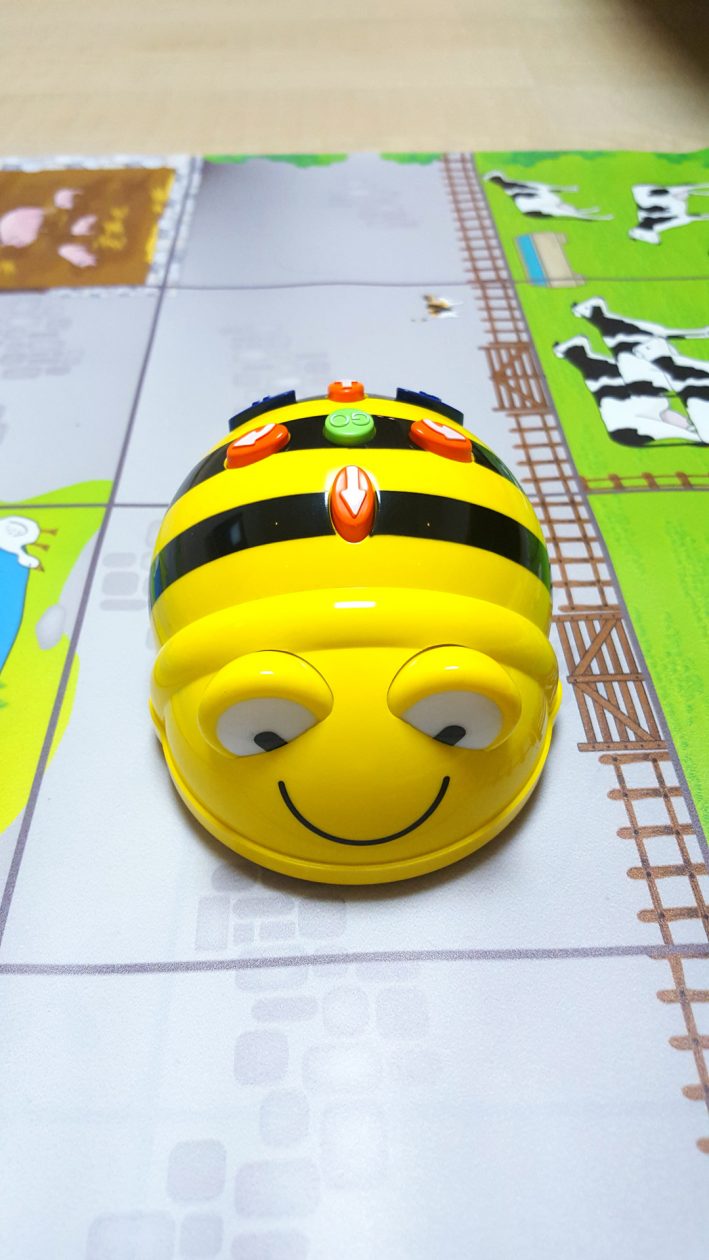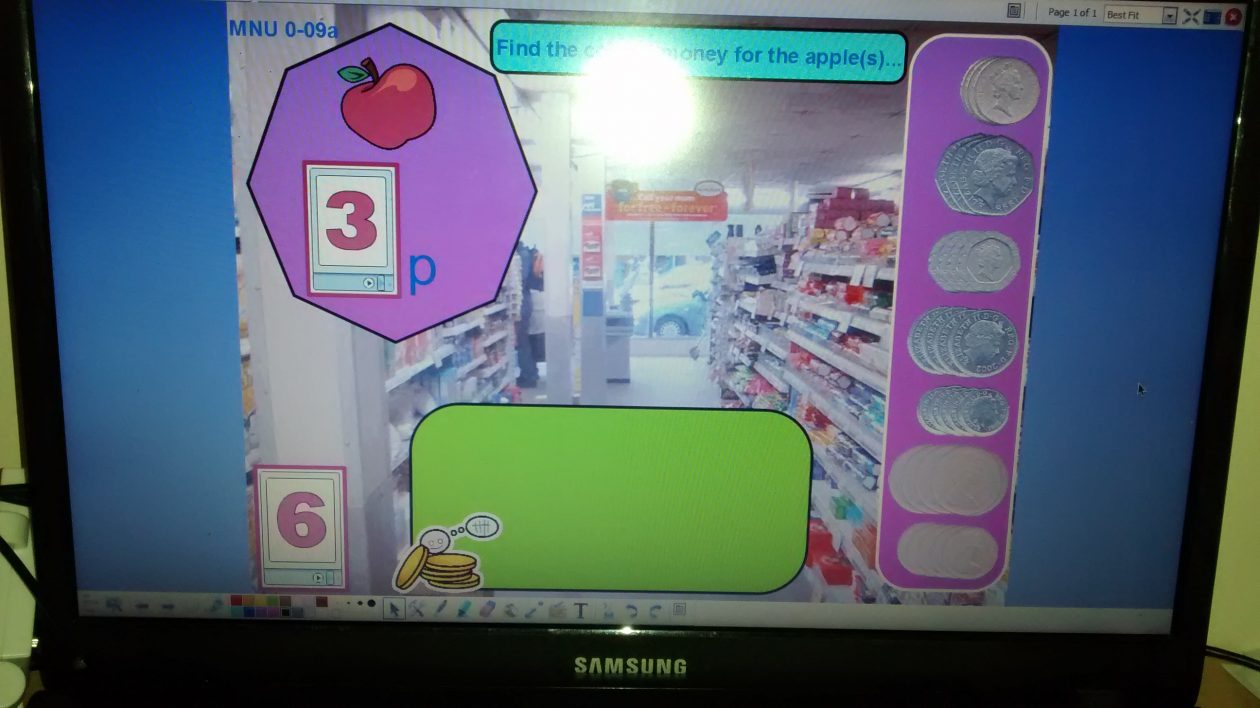
© Scratch Jr.
Tuesday 31st January 2017
Programming/Coding
What can I say, this class is always interesting and there is never a dull moment. This week we were building on the knowledge we gained last week, on how to use programmable toys in the classroom. Well, we stripped this right back for this week. We used the app Scratch Jr, so we as the learner could see what it was like to program something and what codes and secrets were needed to make it do the actions we wanted.
As always, we made sure it related to a classroom setting. We did this by watching how a normal story, out of a reading book could become far more interactive. The children could use their imagination and be as creative as they could be. It was all about getting the children’s imagination not only just how to work and use technology but using this technology in their own inventive and imaginative ways. For example, a lesson such as story writing does not just need to be done on paper and in a jotter. The children could learn the codes of scratch and write their own story using this. This module is really opening my eyes on how to be more creative and step away from the usual boring ‘black and white’ methods of teachings things in a classroom. Scratch Junior also allows text to be added meaning the children are still using words in a written form even if they are not writing it down. They are using their knowledge gained from around them and applying it in a fun and interactive way that they will remember. The ICT and technology being used “is a catalyst for provoking thinking, it can present opportunities for looking at communication and interaction in new ways. The widespread modes of communication with ICT have, until recently, been the written word, visual images and sound.” (Loveless, A. P.54) The way in which the Scratch Jr. is getting the children to interact though communication technology wise and human wise is fascinating. It is teaching them to communicate effectively with one another through oral means and to work as part of a team. They are then problem solving for which way they want the Scratch Jr. to go. They are once again using communication but through coding this time so the Scratch Jr. goes the right way and does what the group want it to do.
Also, as it was an iPad app this means the children could go home and get further practice on how to use this. Homework tasks such as asking them to create a fun story to the class can be done at home. This approach is about using the resources available to each child and getting them to learn and work out-with the class. Many children now have iPads and usually just play games that are not that educational. This would encourage them to use the iPads but in a more constructive way. Another thing the teacher could do is to make the children present their inventive ideas to the class. This would allow the children’s confidence to be built-upon and also their oral skills and non-verbal skills of communication. I am very surprised at how technology can meet so many outcomes and is more interactive way of getting the children to engage. Also, the benefits technology brings in the sense of taking things home. It is always a plus when the children want to take things home. The technology here is encouraging learning in so many forms.
The rest of the time was handed over to us to make our own creative way of showing how to work Scratch Jr to other teachers and the benefits it can bring. We have to make it based on a lesson. We can go in any direction and make it any way we desire to go. I have chosen to show a well-known story of the Hungry Caterpillar as I thought it was well known and Scratch Jr would allow me to show this off in an interactive way. I am well through my presentation now but I have had to overcome a lot of technical glitches. I am nearly finished, but have the opportunity to work on it next week as there are still some loose ends needing tied up. I also have a little pressure as this is an Assessment Task and I not only want my presentation to be interesting but also understandable to pass. As we have the opportunity to work on it next week and I have not finished I will post the full and finished presentation for you next week. I have tried to lay-out my presentation in such a way that is appealing for teachers’ eyes but also that it is easy enough to follow. I hope my coding for the Hungry Caterpillar goes better and is a bit easier next week!
As you can see from above I found today extremely interesting and the knowledge and use of technology I have is growing stronger every time I enter this class. I am so taken-back as to all the different uses and how interesting technology can make something. I am really enjoying this module!
Once I had finished with the class, I decided to do a bit of further reading with articles that our lecturer had given us and from what I am already reading in several books. There was one are article that talks about why all children should be taught how to code. This is because children “need to understand the networked world in which they are growing up in” (Naughton, J. 2012, P.3). A really interesting benefit that the article highlights is the understanding in which children will develop if they are able to fully code. “It will increase problem solving skills and develop computational thinking” (Naughton, J. 2012, P.3), where the children will know the differences of computerised thinking and humanised thinking. It also gives an extensive list as to the type of understanding terms the children will develop if they are able to code. Children will have the understanding for: algorithms; cryptography; machine intelligence; computational biology; recursion and heuristics. (Naughton, J. 2012)
As I said I will post the finished product next week when I have completed all the tasks. Until then have a good week!
Christopher E.
References:
Naughton, J. (2012) Why All Our Kids Should Be Taught How To Code [online] Available: https://www.theguardian.com/education/2012/mar/31/why-kids-should-be-taught-code [Accessed: 31 January 2017]
Loveless, A. The Role of ICT (2003) London: The Bath Press, YHT ltd.











